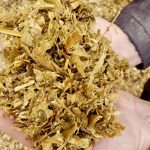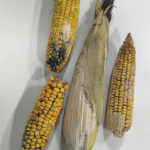Consider that if you grow corn after wheat or vice versa and have a wet summer or fall, be prepared for possible outbreaks of pink mould/fusarium head blight in either crop in such a rotation.


Practical Research: The fusarium we see in small cereal grains is the anamorph of the pink mould seen in corn

Dairy Corner: The amount of starch in corn and barley silage can vary greatly between harvests

Dairy Corner: Always recommended to start with a feed analysis to know what you have

It's important to have it tested, regardless of feed moisture levels

A Crop Advisor's Solution from the January 8, 2019 issue of Grainews

Planting, chopping and weed control require planning, but can help you turn a profit

The wet fall can reduce feed quality of corn residue, create mould

Dairy Corner: If silage moisture is too high going in, it can affect feed quality and palatability